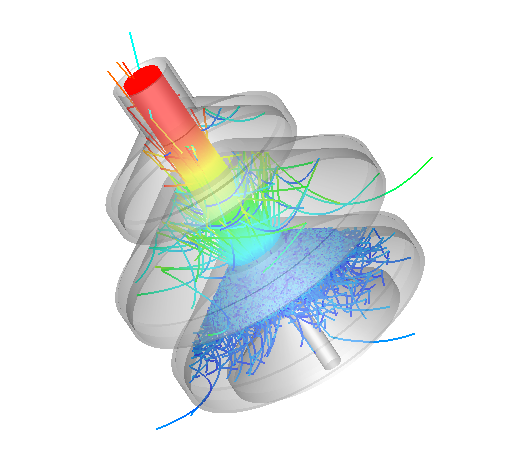


This particle tracking solver example demonstrates the secondary electron emission. The secondary electron emission model implemented in CST Particle Studio is based on a probabilistic model and can be enabled in the material dialog box.
The depressed collector is a device to collect particles by use of a static electric field that decelerates the primary electrons. But possible secondary electrons are accelerated by this field and heat up the device.
Each stage of the depressed collector consists of PEC material. The electron source is placed on a vacuum cylinder and electrons emit with a fixed energy of 280 keV. As secondary emission model the default model "stainless steel (Furman)" is used.
In this example two solvers are used. Firstly, the electrostatic solver to calculate the electric field and secondly, the particle tracking solver to calculate the trajectories of primary and secondary electrons. The accuracy of the electrostatic solver is set to be 10e-6. In order to speed up the field calculation, symmetries are used to reduce the number of meshcells. Symmetries can only be used in the tracking solver, if the checkbox "Monitor charge and current" in the solver special's dialog box is disabled.
Cause due to the secondary electrons the maximum number of timesteps in the particle solver special's dialog box has to be increased. If you forget to increase the number of timesteps, there will be a warning in the message window. The maximum number of secondary generations is set to a value of 2. If you choose a large number of secondary electron generations, it might happen that you need a lot of free disk space to store the tracking data.
After the particle tracking solver has been finished, the tracking results can be found in the navigation tree. The entry for the trajectories plot exists in the "2D Result" section. It is possible to get detailed collision information from the "Collision Information" file, which also has an entry in the navigation tree.